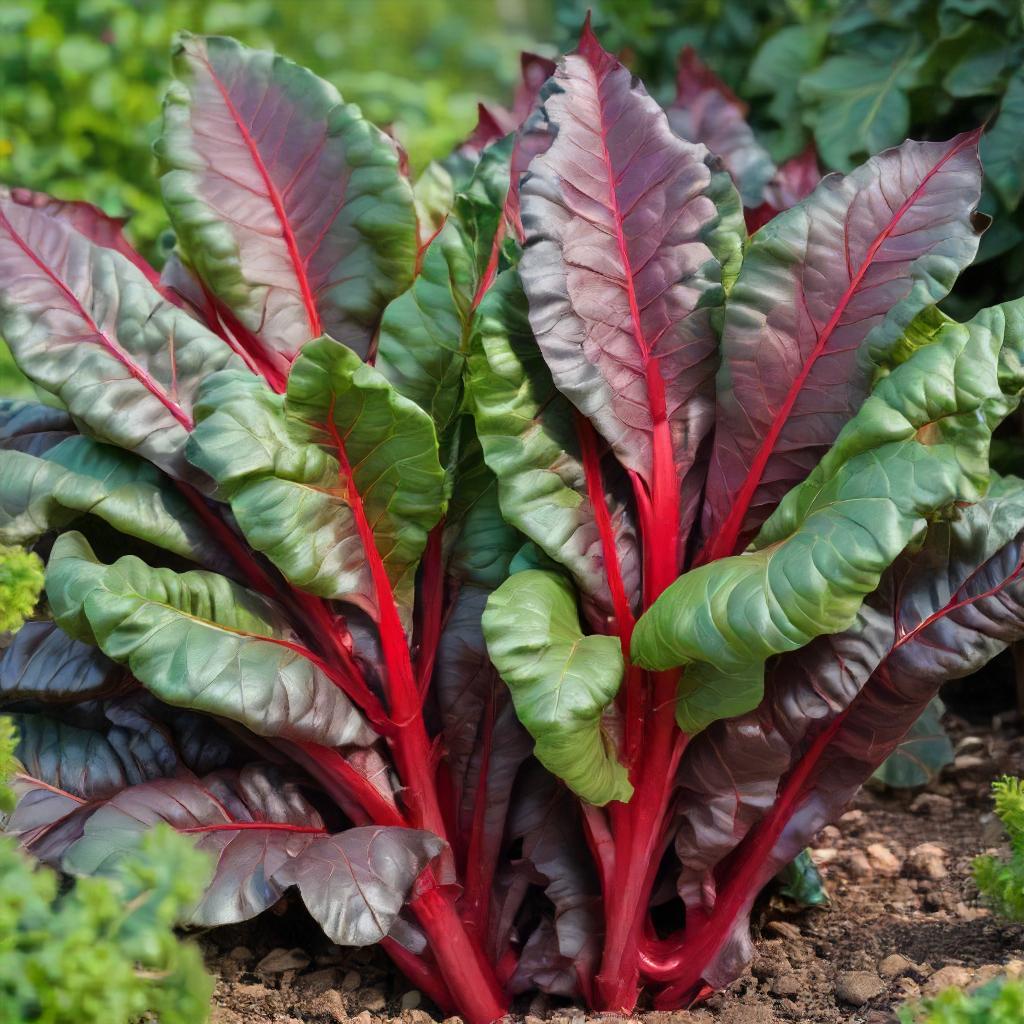- Hardiness Zone: 7-12 Biennial
- Hardiness Zone: 3-11 Biennial Typically Grown As An Annual
Seed Depth: 1/2 inch
Seed Spacing: 6–12 inches
Row Spacing: 18–24 inches
Sunlight: Full sun to partial shade
Days to Sprout: 7–14 days
Days to Maturity: 50–60 days
Growth Habit: Upright, leafy biennial grown as an annual
Sunlight: Thrives in full sun but tolerates partial shade, especially in warmer climates.
Soil Type: Prefers rich, well-drained soil with a pH of 6.0–7.5. Adding compost improves soil fertility.
When to Plant: Sow seeds directly outdoors in early spring or late summer for a fall crop. For an earlier harvest, start seeds indoors 4–6 weeks before the last frost.
Direct Sowing: Plant seeds 1/2 inch deep, spacing them 6–12 inches apart in rows 18–24 inches apart. Thin seedlings to the desired spacing as they grow.
Indoor Sowing: Start seeds in trays and transplant when seedlings are 4–6 inches tall.
Succession Planting: Sow every 2–3 weeks for a continuous harvest during the growing season.
Watering: Water consistently to keep the soil evenly moist but not soggy. Mulch around plants to retain moisture and regulate temperature.
Fertilizing: Use a balanced fertilizer or compost at planting and mid-season to promote vigorous leafy growth.
Pruning: Harvest outer leaves regularly to encourage new growth and maintain plant health.
Pest and Disease Control: Monitor for aphids, slugs, and leaf miners. Use organic pest control methods and ensure proper spacing for airflow.
When to Harvest: Harvest outer leaves when they are 8–10 inches long, typically 50–60 days after planting. Baby greens can be harvested earlier.
How to Harvest: Use scissors or a knife to cut leaves at the base, leaving the central growing point intact for continuous harvests.
Seed Collection: Allow plants to bolt and form seed heads. Collect seeds once heads are fully dry.
Storing Seeds: Store seeds in an airtight container in a cool, dry place.
Why You’ll Love It
Ruby Red Swiss Chard, also known as Rhubarb Chard, is a stunning heirloom grown for its bold color and mild, earthy flavor. With glossy green leaves and striking ruby-red stems and veins, this variety is as decorative as it is delicious. It’s heat-tolerant, cold-hardy, and ideal for cut-and-come-again harvests. Enjoy it young in salads or mature in sautés and soups — this versatile green thrives in spring through fall gardens.
Plant Characteristics
Height: 18–24 inches
Growth Habit: Upright with colorful, leafy tops and thick stalks
Leaf Type: Dark green, crinkled leaves with red stems and veins
Days to Maturity: 50–60 days (25–30 for baby greens)
Hardiness: Cool-season biennial grown as an annual
Flavor and Culinary Uses
Flavor: Mild, earthy, and slightly sweet with tender leaves and crisp stems
Culinary Uses: Excellent for sautéing, steaming, adding to soups and pasta dishes, or using raw in salads. Stems can be cooked like asparagus or pickled.
Companion Planting Tips
Good Companions: Onions, beans, carrots, cabbage, and lettuce
Avoid Planting Near: Pole beans, which may compete for space and light
Bonus Benefit: Continues to produce all season when harvested regularly — perfect for small gardens and steady harvests
Common Issues and Solutions
Leaf Spot or Yellowing: Space plants well and water at the base to reduce disease pressure
Wilting or Bolting: Provide consistent moisture and plant during cooler seasons to avoid stress
Pest Issues (Leaf Miners): Remove affected leaves early and use row covers as needed
Seeds Per Packet
| 3g | Approximately 170 |
| 5g | Approximately 285 |
| 7g | Approximately 400 |
| 10g | Approximately 570 |






Share and get 15% off!
Simply share this product on one of the following social networks and you will unlock 15% off!